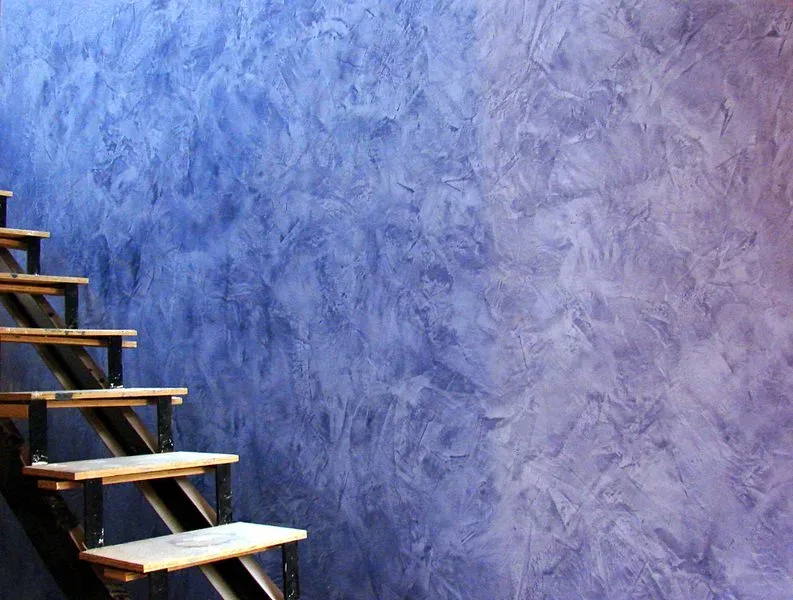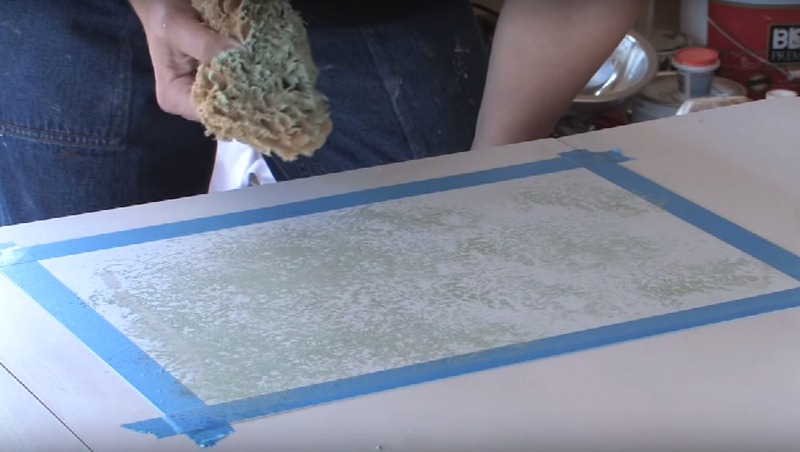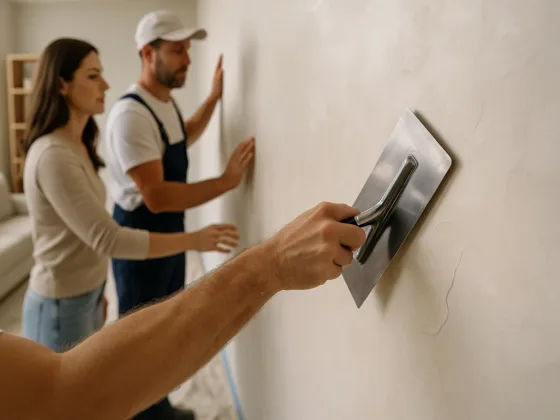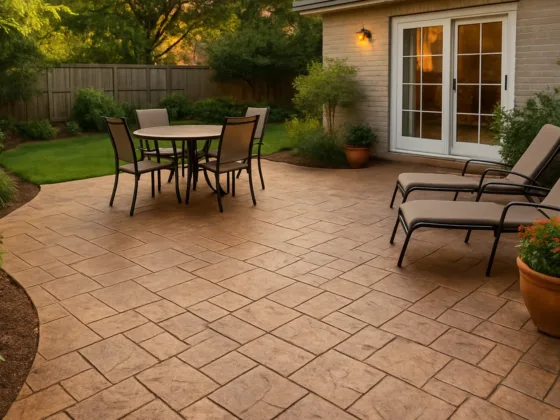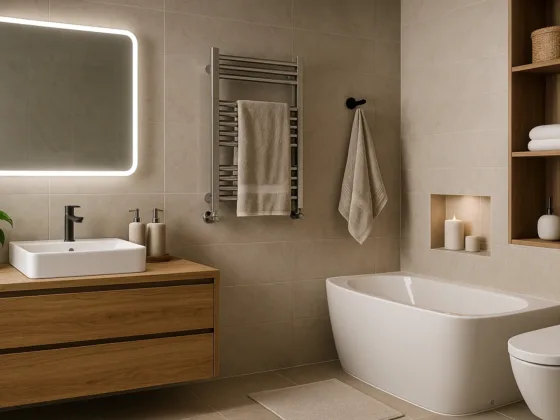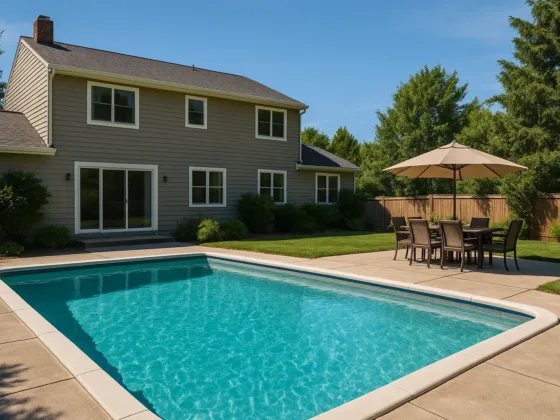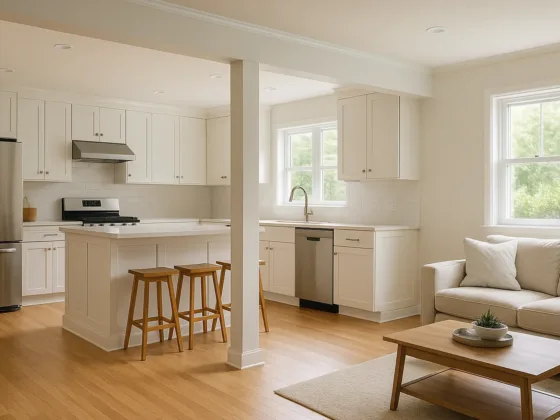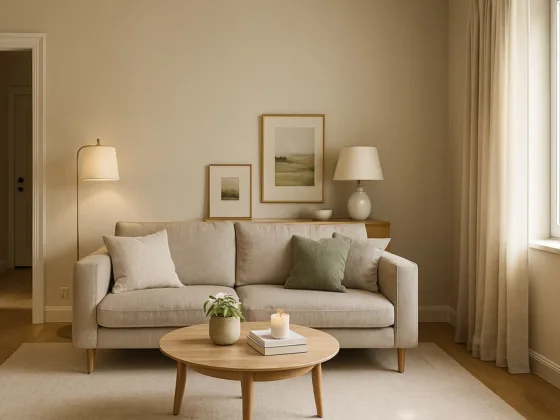It’s easy to create beautifully decorated walls without buying fancy tools or expensive supplies. Try one (or all) of these easy techniques and quickly perk up any wall.
Decorative wall painting can add a dramatic effect to any room. You can learn some easy wall painting techniques that you can use today, even if you’re brand new to decorative wall painting. This five minute “faux finish school in an article” can get you faux finish painting in no time.
Tools You’ll Need:
- Paint
- Painter’s tape
- Faux finish glaze
- Sponges
- Paper plates
- Plastic drop cloth
- Small containers (one for each color of paint)
- Paint tray
- Paint roller
Translucent Rectangles
Materials Needed
- Removable painter’s tape (like the blue 3M brand tape)
- Glaze
- Paint
- Natural sea sponges (or any sponge)
- Paper plate
- Level
Instructions
- Using 4 pieces of removable painter’s tape, create rectangle outlines on the wall. Create rectangles of different sizes and stagger their heights on the wall. For best results, use a level to make sure your edges are truly vertical and horizontal.
- Mix a three parts glaze to one part paint; one color in each container.
- Dab the sponge into the paint/glaze mixture. Blot excess paint onto the paper plate. Keep dabbing until you can get a neat pattern without smears or blobs.
- Using the sponge, dab the paint/glaze mixture inside the lines of the taped rectangle paying while special attention to getting paint in the corners and along the edges.
- Add paint (put paint on the wall with the sponge) or subtract paint (by dabbing it off with a clean and dry sponge) until the desired effect has been achieved. Immediately remove the tape. Allow to dry.
- Create a second set of rectangles which partially overlap the first set and repeat the technique.
Sponging Technique
- Prepare the Wall: Paint the wall with a solid background color and let it dry completely.
- Mix the Paint: In a small container, mix one part glaze to three parts paint. Create a separate mixture for each color you want to sponge.
- Prepare the Sponge: Wet the sponge and squeeze out any excess moisture.
- Remove Excess Paint: Dip the sponge into the paint mixture and dab it onto a paper plate a few times to remove any excess paint. Keep dabbing until you achieve a neat pattern without smears or blobs.
- Start Sponging: Begin with a 3-foot-square area and lightly “pounce” the paint/glaze mixture onto the wall in a random pattern. Pounce by using quick movements and slightly turning your wrist as the sponge comes off the wall. Reload the sponge as needed when the pattern starts to lighten.
- Check for Gaps: Once all sections are completed, step back and inspect for any gaps or uneven areas. Fill in and blend as necessary.
Plastic Sheet “Ragging”
- Paint the wall (or object) to be sponged with a base or background color. Allow to dry.
- Cut several pieces of 1.5 ml sheeting plastic (or plastic drop cloth) into 18-inch squares.
- Mix one part glaze to one part paint (either the base color or a complimentary color) in a small container.
- Pour the paint/glaze mixture into a paint tray and, using a paint roller, apply the paint/glaze to an 18-inch square section of wall.
- Place a piece of plastic over the glazed area on the wall, press down lightly in random areas, and then peel the plastic off the wall. Reposition the plastic over the area and repeat. When the plastic becomes saturated, discard it and use a new piece.
- Repeat the technique until all areas of the wall have been “ragged.”
Read Also:
Conclusion
Now you can easily transform your walls. These simple decorative painting techniques add style to any room. Forget expensive tools; you can get amazing results using everyday items. So grab a sponge, some paint, and get ready to create beautiful walls!
